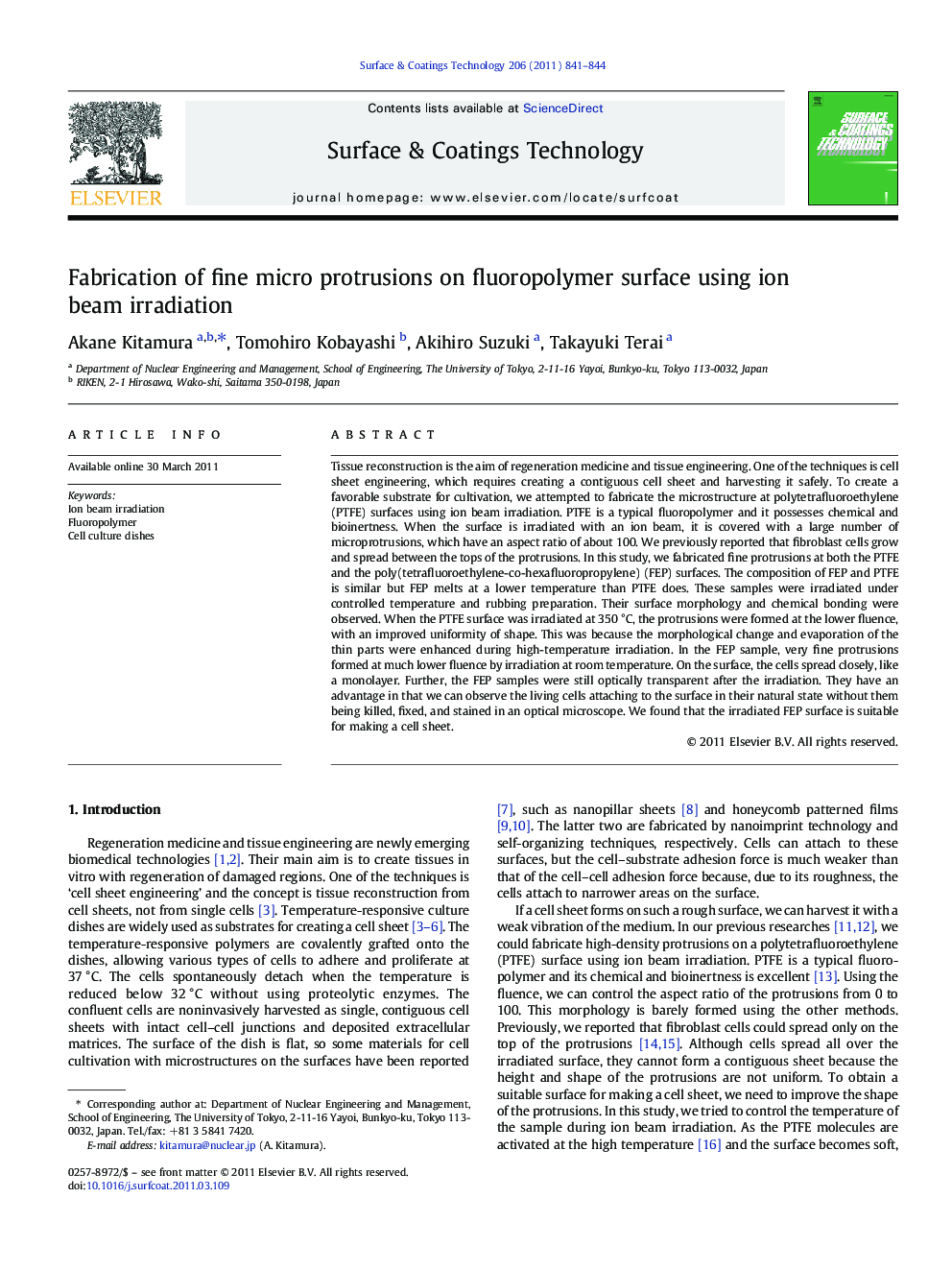| Article ID | Journal | Published Year | Pages | File Type |
|---|---|---|---|---|
| 1658865 | Surface and Coatings Technology | 2011 | 4 Pages |
Tissue reconstruction is the aim of regeneration medicine and tissue engineering. One of the techniques is cell sheet engineering, which requires creating a contiguous cell sheet and harvesting it safely. To create a favorable substrate for cultivation, we attempted to fabricate the microstructure at polytetrafluoroethylene (PTFE) surfaces using ion beam irradiation. PTFE is a typical fluoropolymer and it possesses chemical and bioinertness. When the surface is irradiated with an ion beam, it is covered with a large number of microprotrusions, which have an aspect ratio of about 100. We previously reported that fibroblast cells grow and spread between the tops of the protrusions. In this study, we fabricated fine protrusions at both the PTFE and the poly(tetrafluoroethylene-co-hexafluoropropylene) (FEP) surfaces. The composition of FEP and PTFE is similar but FEP melts at a lower temperature than PTFE does. These samples were irradiated under controlled temperature and rubbing preparation. Their surface morphology and chemical bonding were observed. When the PTFE surface was irradiated at 350 °C, the protrusions were formed at the lower fluence, with an improved uniformity of shape. This was because the morphological change and evaporation of the thin parts were enhanced during high-temperature irradiation. In the FEP sample, very fine protrusions formed at much lower fluence by irradiation at room temperature. On the surface, the cells spread closely, like a monolayer. Further, the FEP samples were still optically transparent after the irradiation. They have an advantage in that we can observe the living cells attaching to the surface in their natural state without them being killed, fixed, and stained in an optical microscope. We found that the irradiated FEP surface is suitable for making a cell sheet.
► Micro protrusions were formed on PTEE and FEP surface by ion irradiation. ► The size and the position of protrusions were controlled by the polymer's original texture. ► The L929 cells could spread along the arranged protrusions. ► Using FEP samples, the living cells were observed with a phase contrast microscope.
